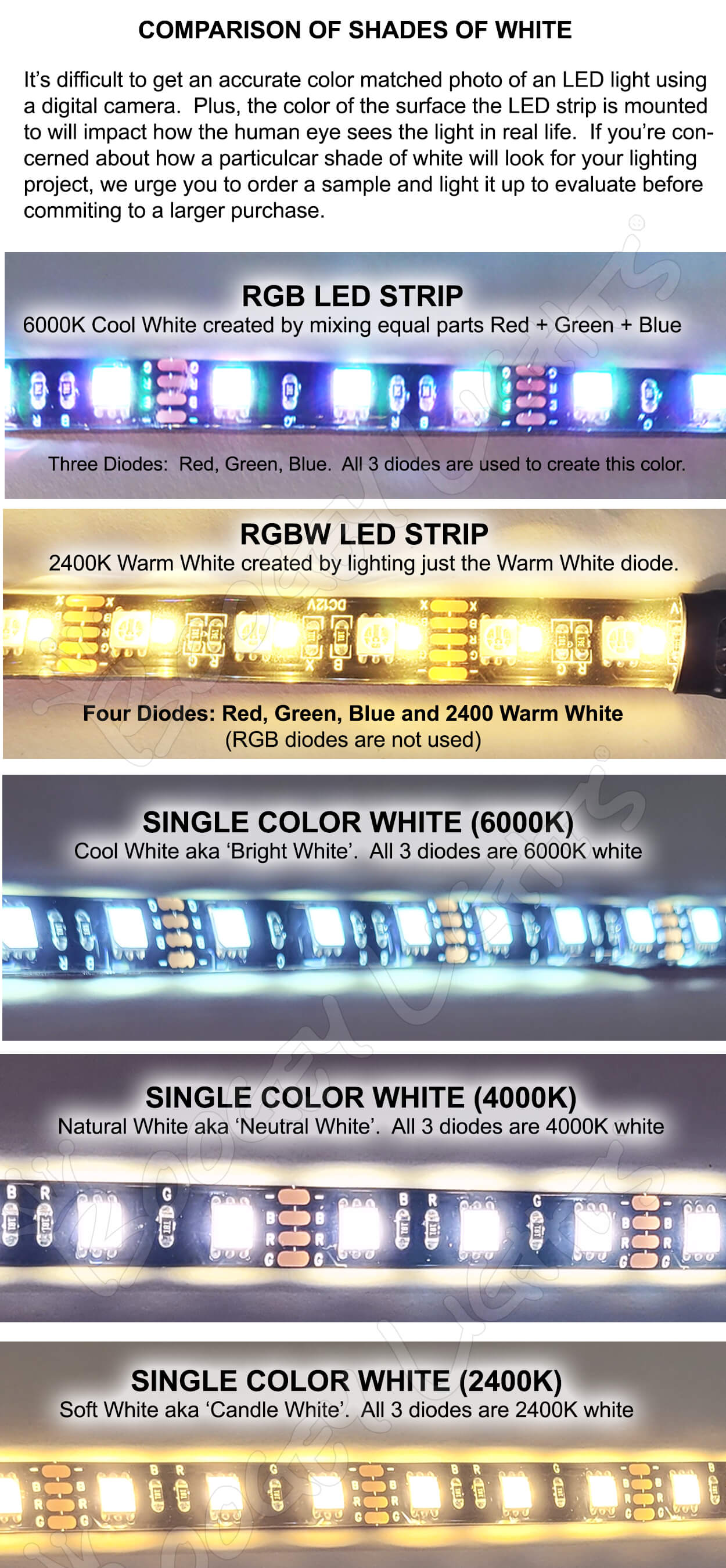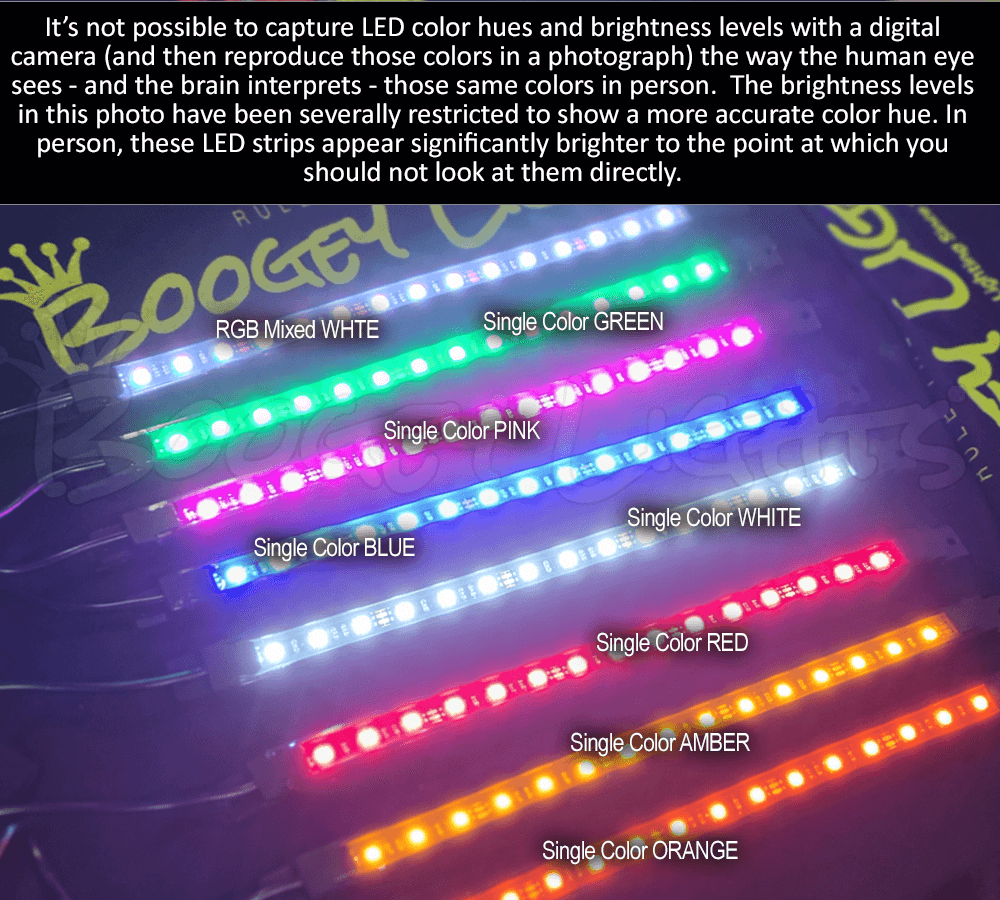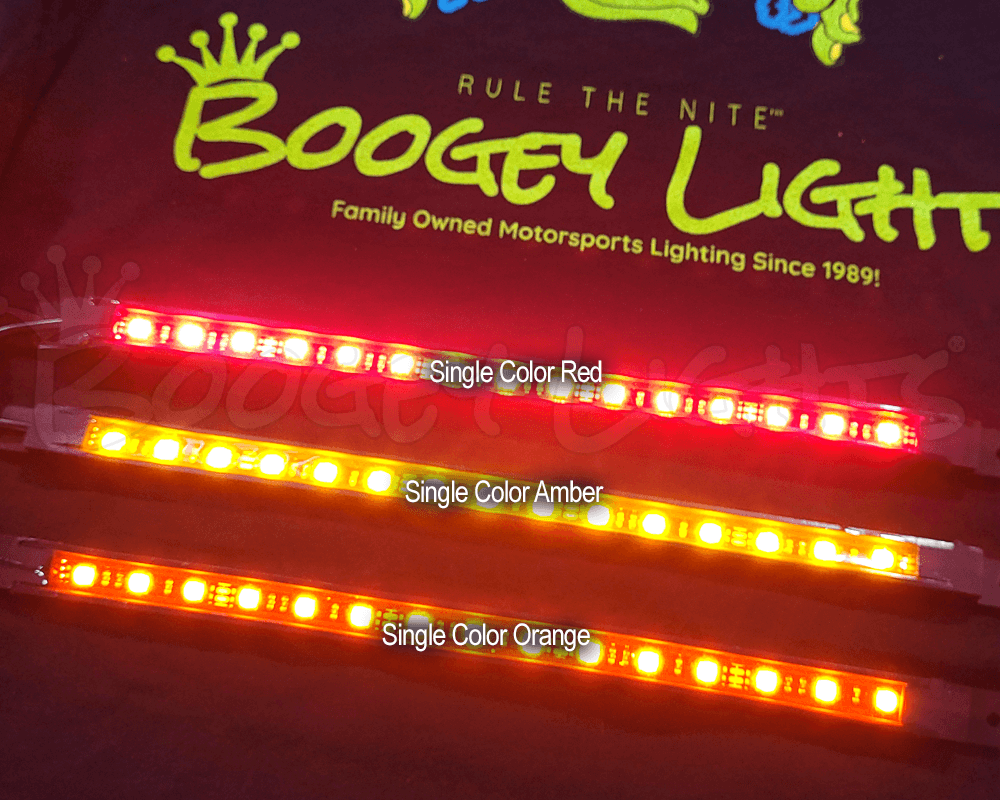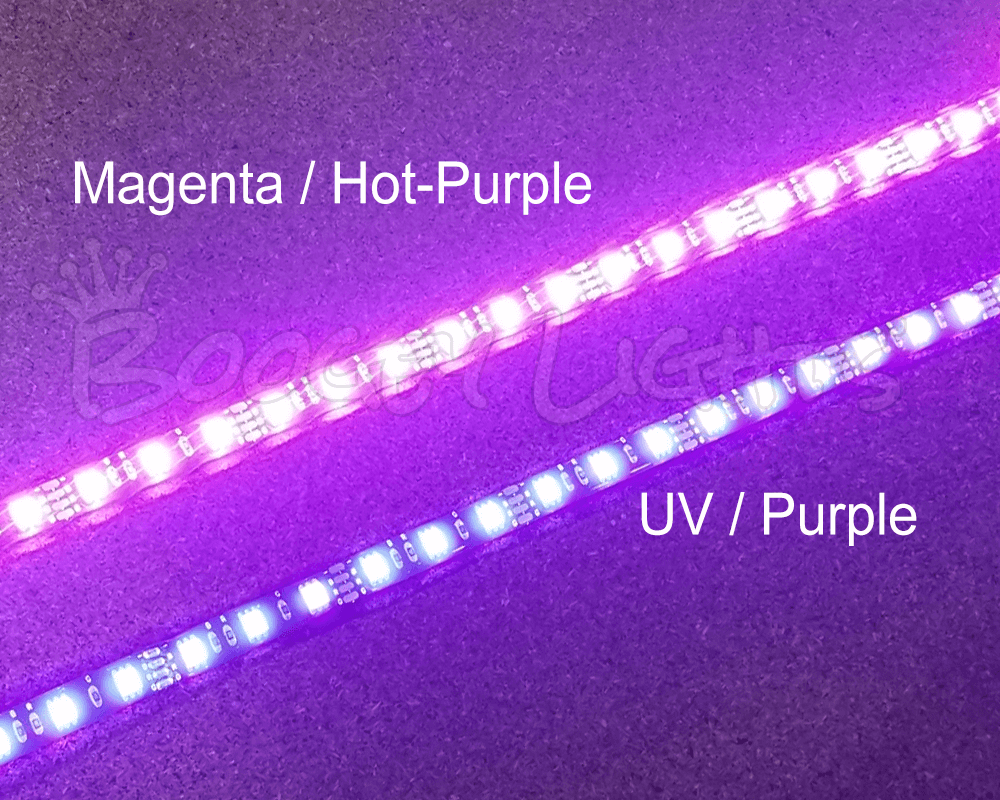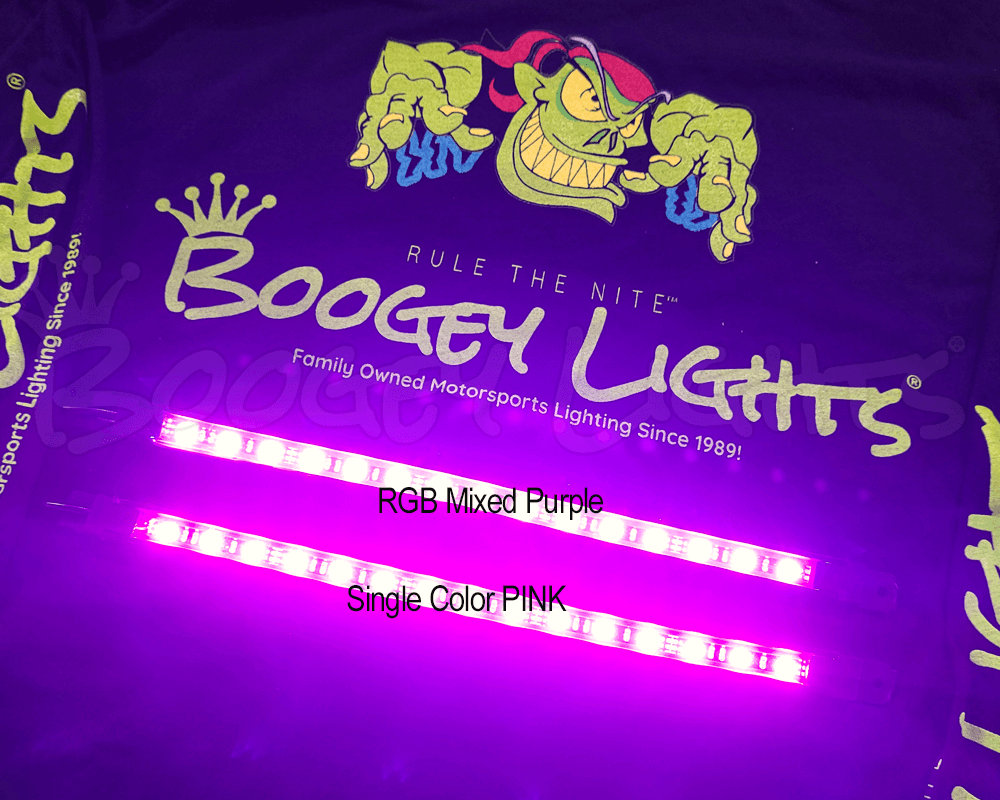WHAT LED COLORS LOOK LIKE
Customers will often ask us to describe what a particular LED color looks like. Truth is, it's not possible to accurately describe what a specific LED color looks like. Why? Because there are a number of factors that impact how a particular LED color appears to the human eye. For starters, it's important to understand that Boogey Lights® are accent lights. With only a few exceptions, our lighting systems are designed to be hidden from view. When installed properly, you'll never see the LED diodes/lighting fixtures themselves. You'll only see the glow reflecting off the surrounding surfaces coming from the LEDs. That means the color of the surface the LEDs are mounted to coupled with the color of the surfaces surrounding the LEDs will directly impact how the human eye perceives the color being reflected. A white surface for example will tend to brighten the color whereas a darker surface will tend to darken the color. Real word scenario: If the LEDs are shining downward on black pavement, the light reflecting off that black pavement will appear different than if on concrete which is a lighter material So for example, the LED color green will tend to look more like a "light green" when shining off of lighter color surfaces and more like a "dark green" when shining off of darker color surfaces. Same LEDs, same diodes but the human eye perceives the color reflected differently based on the color of the surrounding reflective surfaces.
When in doubt, dry mount. If you are looking for a specific color or are very picky about the LED color look you're trying to achieve, we strongly suggest dry mounting the LED strip in the location you're looking to light up and then powering up that strip temporarily with a 12vdc power source. That way you can see how the glow looks for your specific lighting product before committing to a specific LED color. It's really the only way to know how the light will appear.
A Word of Caution. The below photos are of our LEDs when viewed directly. With a rare exception, these LEDs will never be used in this manner. They're almost always mounted in such a way that you'll only see the glow from the LEDs reflecting off another surface. Keep this in mind when viewing the below photos.
The Problem with Photographing LEDs. It's not possible to capture LED color hues and brightness levels with a digital camera and then accurately reproduce those colors in a photograph the way the human eye sees and the brain interprets those same colors in person. To show a more accurate color hue, the brightness levels of the photos below have been severally restricted. In person, the light coming from these LED strips will appear significantly brighter to the point at which you should not look at them directly.
